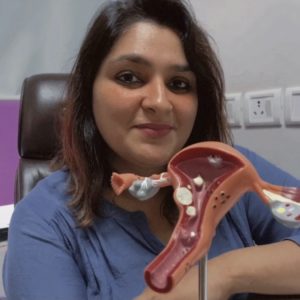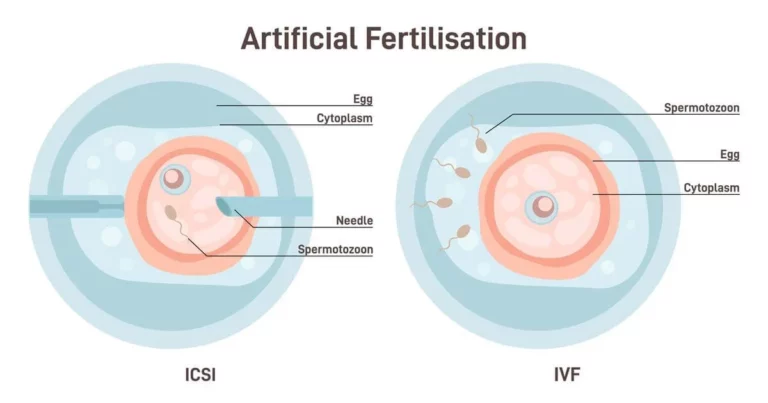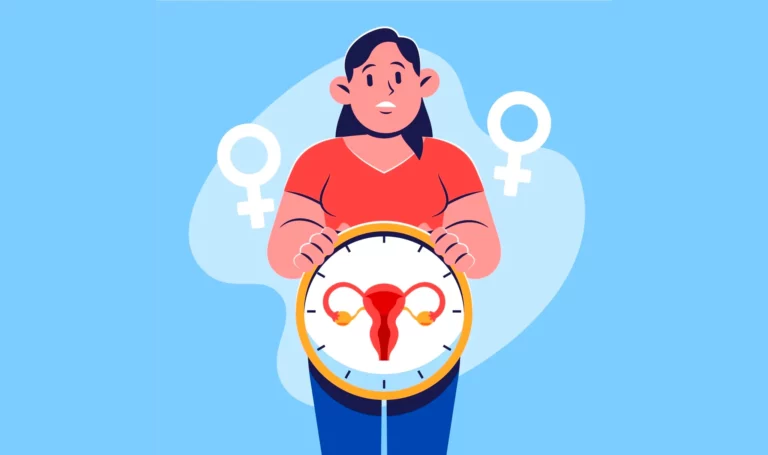Having a child is a dream for many. It is a beautiful and transformative experience for couples. But, for some, this journey towards parenthood can be challenging due to fertility problems, particularly if fallopian tube blockage is the reason. These tubes play a crucial role in the process of reproduction, and any obstruction in these tubes can complicate the conception.
In this article, we will talk through fallopian tube blockage and infertility, available treatments options, and 7 essential steps to getting pregnant with blocked fallopian tubes.
Blocked Fallopian Tubes and Infertility
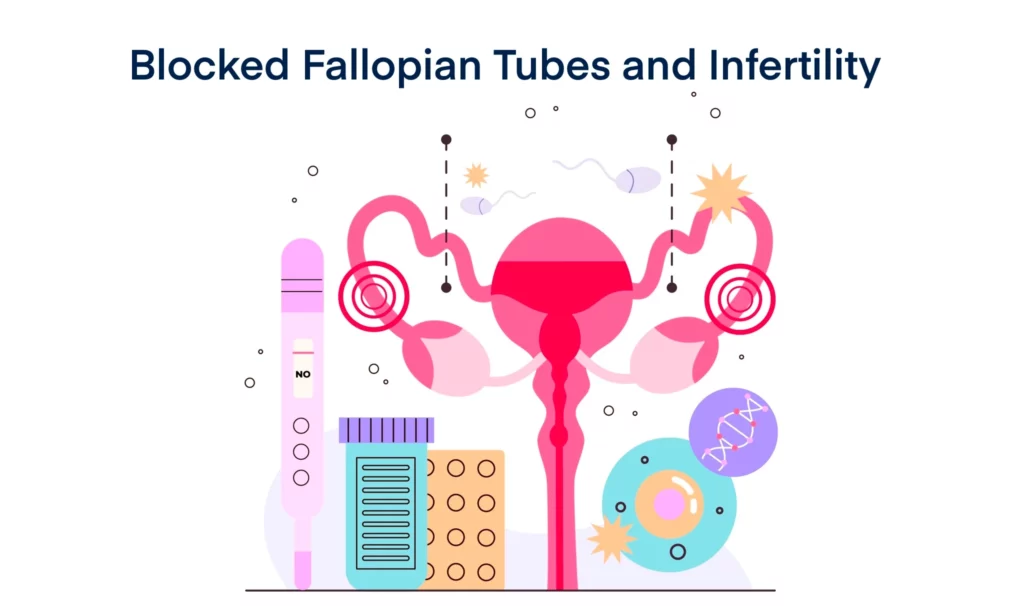
Blockage of the fallopian tubes is a significant reason for infertility in women. According to case studies, approximately 20-25% infertility cases are caused by blocked or damaged uterine tubes.
These tubes provide a pathway for the sperm to meet the egg and fertilize it, and for the fertilized egg to travel from the ovaries to uterus and implant a pregnancy. Therefore, any obstruction in these tubes will disrupt this process and make conception unlikely, leading to infertility.
Such tubal obstruction can be caused by some hormonal problem, past surgeries, infections or inflammations, other disorders or diseases, or structural abnormalities. However, not all women with tubal blockage are completely infertile. Women have two uterine tubes and if a woman has one tube blocked but the other one intact or if a woman has partially blocked tubes, she can still conceive without any difficulties.
But, complete tubal obstruction would require medical intervention.
Therefore, if you are struggling to conceive and suspect you have blockage in your oviducts, consulting a fertility specialist will help. They could conduct certain diagnostic tests to evaluate your condition and recommend appropriate pregnancy treatments.
Increase your pregnancy chances with Nory Ovulation Kit
When to Consult a Doctor?
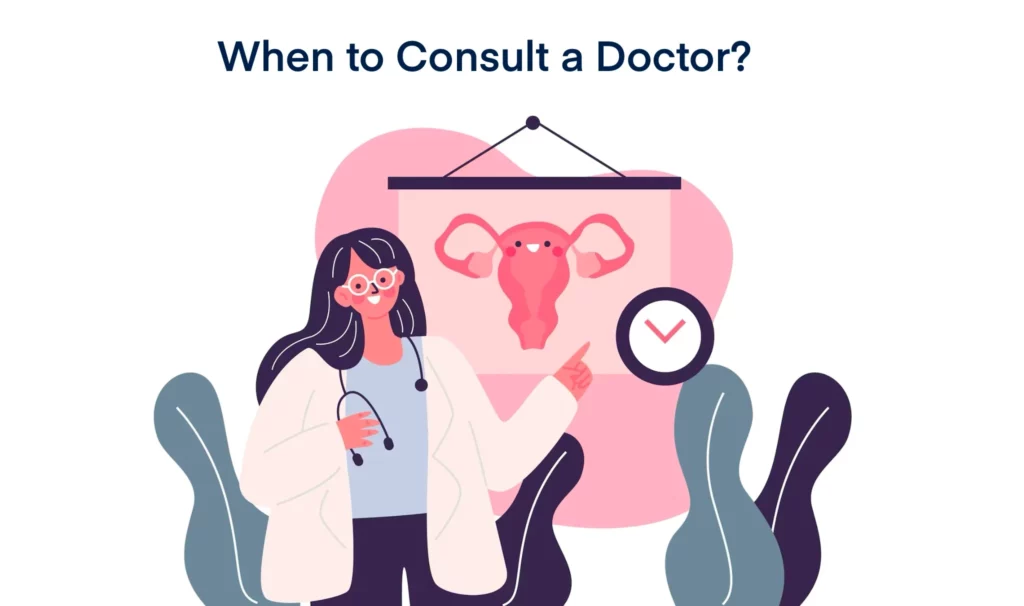
In typical cases, it is advised to seek medical help if you have been regularly trying to conceive for at least six months to a year and failing recurrently. However, you should consult your doctor immediately if you experience severe pelvic pain or discomfort or suspect a severe underlying condition.
Treatments for Blocked Fallopian Tubes
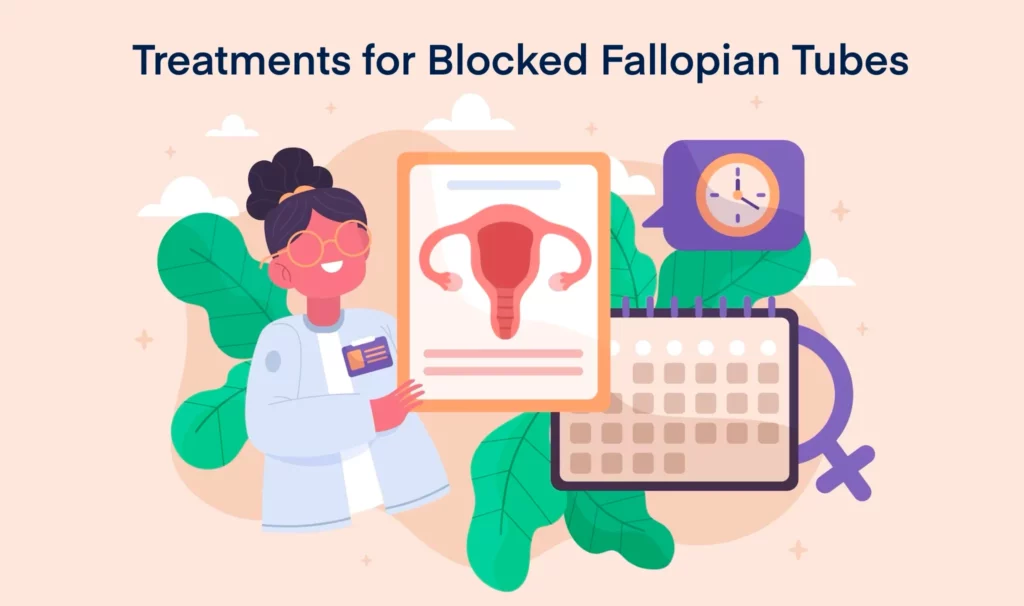
Depending on the underlying cause and the severity of the blockage, there are various natural, medical, and surgical treatment options available for tubal blockage. These include:
Natural Remedies
In cases of minor tubal obstruction, conceiving is still possible by uplifting the overall fertility. Making positive changes in lifestyle such as maintaining a healthy body weight, quitting tobacco products and alcohol consumption, managing stress, and eating healthy and more nutritional food will help.
Medications
In cases where conceiving is achievable by correcting hormone imbalance and stimulating ovulation despite having partial tubal obstruction, doctors may prescribe certain fertility medicines such as clomiphene citrate or letrozole to escalate conception chances.
Surgical Options
In cases of absolute obstruction in the fallopian tubes, the woman may have to undergo a surgical procedure. IVF doctors typically recommend the following procedures to remove blockages and/or repair damages of the uterine tubes:
- Tubal Cannulation: It is a minimally invasive surgical procedure to undo the blockage in oviducts. It involves inserting a tube called a catheter through the vagina under ultrasound, radiological or hysteroscopic guidance. The doctor then identifies the blocked area and opens it up with the help of the catheter. In this procedure, the doctor does not need to make any cuts or keep you in the hospital under observation afterwards.
- Salpingectomy or Fallopian Tube Surgery: Only advised in severe cases, this procedure involves removal or one of both uterine tubes.
- Fimbrioplasty: This procedure involves restoring the female’s fertility by repairing and reconstructing the damaged or blocked oviducts instead or simply opening them up or removing them. Fimbrioplasty is always recommended over salpingectomy until and unless salpingectomy is absolutely necessary.
7 Steps to Getting Pregnant with Blocked Fallopian Tubes

Dealing with tubal blockage and getting pregnant with it can be really challenging. It can confuse the couples about the right approach and steps to take. These steps are as follows:
Step 1: Understand Signs and Symptoms
Most women do not find out about oviduct blockage until they see a doctor for not being able to conceive even after trying for a long period. In typical cases, mild but constant abdominal pain is an early sign or symptom indicating tubal obstruction.
Step 2: Diagnose the Condition
If you suspect that you have obstructed uterine tubes, it is important that you get a diagnostic test done to confirm the condition. Common diagnostic procedures to identify tubal obstruction are Hysterosalpingography (HSG), laparoscopy, and sonosalpingography (SSG).
Step 3: Find Out the Underlying Cause
Oviduct obstruction is generally a result of an underlying condition. And, it is important that you first find out the cause of blockage because different causes will require different treatment approaches. Common causes include: pelvic inflammatory disease (PID), endometriosis, hydrosalpinx, ectopic pregnancy, congenital abnormalities, genital tuberculosis and history of abdominal and pelvic surgeries.
Step 4: Understand How Critical Your Condition Is
Once you have identified the underlying reason for tubal blockage, it is important that you also detect its severity because the treatment approach varies depending on the severity.
Step 5: Consult with a Fertility Specialist
In many cases, uterine tube blockage is treatable with medications only. Therefore, it is important to consult with a fertility specialist before starting with any treatment.
Step 6: Monitor Your Overall Fertility
Apart from tubal blockage, other fertility aspects are also important to get and maintain a pregnancy. One must keep track of their overall fertility to find out if there are other fertility conditions that require treatment.
Step 7: Explore Treatment Options
Since you have made all the essential considerations, it is time to explore treatment options and select a suitable one. Common treatments include:
- In Vitro Fertilization: IVF is the preferred treatment for women with blocked fallopian tubes. It bypasses tubal blockage as it involves fertilization outside the woman’s body, typically in a clinical facility. Then, the fertilized egg is directly placed around the uterine lining for implantation.
- Intrauterine Insemination: IUI treatment approach, in which male partner’s washed and concentrated sperm are inseminated directly into the uterus around ovulation period, bypassing the cervix and oviducts.
Pregnancy Success Rates with Fallopian Tube Blockage
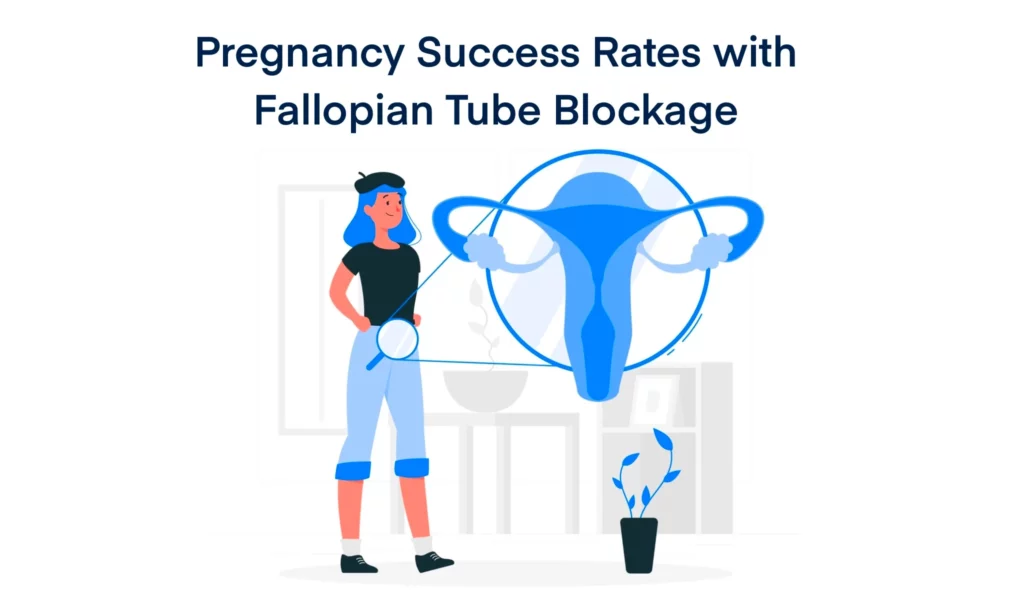
The success rates of conceiving with blocked fallopian tubes vary greatly depending on factors such as severity of the blockage and involvement of surrounding reproductive organs, underlying cause and its severity, and the preferred treatment method. However, the success rate of most repaired or unblocked oviducts is around 40-80%. On the other hand, the success rate drops as low as 20-40% in cases involving their partial removal through surgery. Still, every case is different and unique on its own. Therefore, it is crucial that you discuss success rates with your doctor, and set realistic expectations.
Moreover, there are also several other factors that influence the chances of getting pregnant. These include:
- Woman’s Age: A woman’s age plays a crucial role in establishing her fertility. As women age, they tend to have a significant decline in their fertility. Their ovarian reserve and egg health declines, as well as, their likelihood of developing certain fertility conditions escalates.
- Pre-existing Fertility Conditions: Apart from tubal blockage, presence of certain fertility conditions such as polycystic ovarian syndrome (PCOS), endometriosis, fibroids, irregular ovulation, low ovarian reserve, and hormonal imbalances are also some significant reasons for infertility.
- Male Partner’s Fertility: Alongside woman’s fertility, male partner’s fertile health is also essential for pregnancy. A man with low sperm count and poor sperm motility also impacts the likelihood of pregnancy.
- History of Previous Pregnancies: It is a determinant of how fertile a woman is by knowing her past pregnancies. If the woman has carried health pregnancies previously, she is very likely to get pregnant easily after having her oviducts restored.
- Lifestyle and Overall Health: A woman’s overall health and lifestyle habits significantly influences her fertility as well. Forming healthy habits such as exercising, eating healthy and managing stress, as well as, getting rid of bad habits such as smoking and drinking alcohol will escalate the pregnancy likelihood.
The Bottom Line

While blocked fallopian tubes can pose challenges to couples, there are treatment options and steps you can take to escalate your chances of pregnancy. Couples can attain parenthood by seeking right medical guidance, understanding treatments, figuring out underlying causes, and exploring assisted reproductive technologies (ARTs). Also remember, the journey towards parenthood is often challenging. It would require you to stay positive, be informed, be patient, and find emotional support.
FAQs
Is pregnancy possible with one blocked fallopian tube?
Yes, women have two uterine tubes and if a woman is diagnosed to have blockage in only one tube, or if she is born with only one tube, she still has chances of getting pregnant. However, in most such cases, if one tube is blocked, it is very likely that the woman’s other tube will also be affected. Moreover, even if the tube is only partially blocked, it poses a high risk of ectopic pregnancy.
Can fallopian tube blockages be removed?
The treatment approach depends on the severity of the blockage and its location. Doctors always prefer tubal cannulation (opening up the blockage) or fimbrioplasty (removing the blockage and reconstructing the tube) over salpingectomy (partial or complete removal of tubes). However, if the blockage is severe and poses high risk of rupture, the doctor may have to consider removing one or both uterine tubes.
How does IVF bypass fallopian tube blockage?
Natural fertilization takes place in the woman’s body, in her uterine tubes. But, IVF treatment on the other hand, mimics the fertilization process as it involves fertilizing a woman’s egg by the intended father’s sperm in a clinical facility instead of her own body. An incubation device is used to mimic the function of these tubes, and once the eggs become blastocyst embryos and are ready, they are directly implanted around the uterine lining.
Can I get pregnant naturally with fallopian tube blockage?
It is typically difficult to conceive naturally if you have blocked uterine tubes. It is always advised that you seek advice from a fertility specialist and explore the possibilities.
What happens to the egg when fallopian tubes are blocked?
Eggs only have a lifespan of 36-48 hours and if it does make it to the fallopian tube by the right time, it will eventually degenerate.
Is it possible to get pregnant naturally after tubal surgery?
This fairly depends on the severity of the blockage, its location and type of surgery performed. There are three types of tubal surgeries, tubal cannulation (opens up blockages without excision) and fimbrioplasty (reconstructs the damages), and salpingectomy (removes the tubes partially or completely). If you had tubal cannulation or fimbrioplasty, you have chances of conceiving naturally post-surgery. On the other hand, if one or both of your tubes are removed, it will not be possible to conceive naturally.

